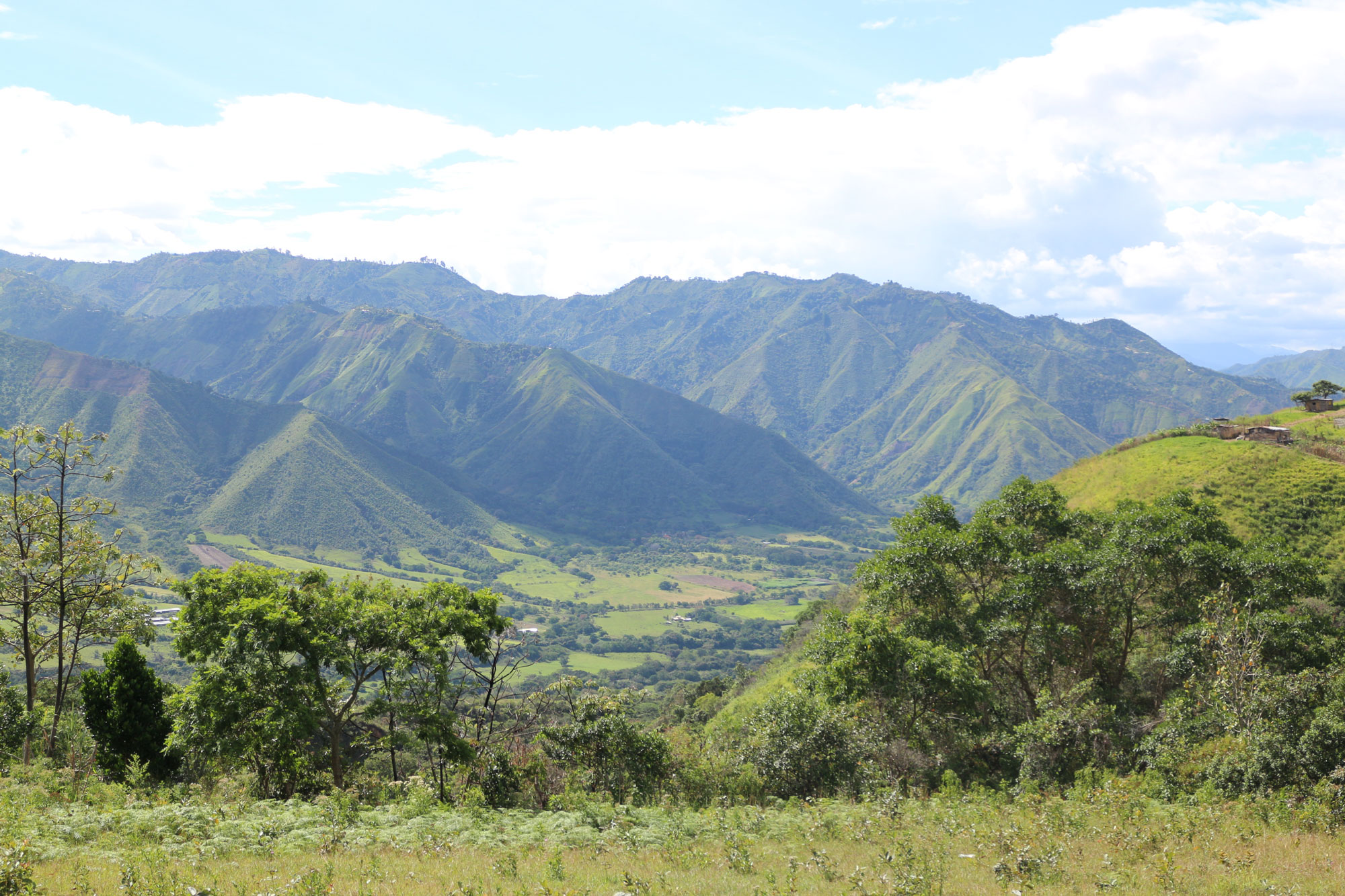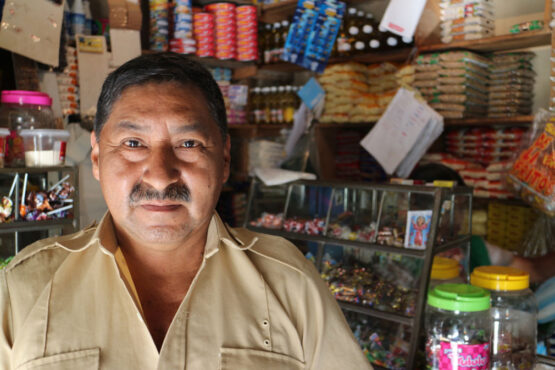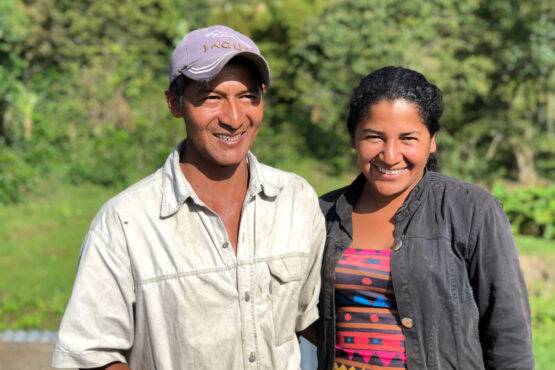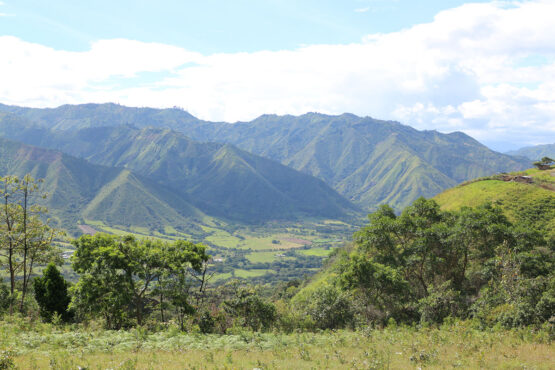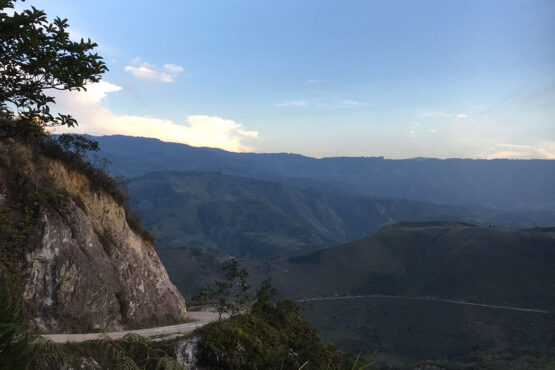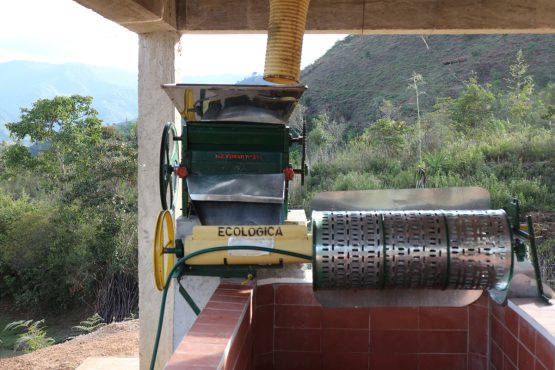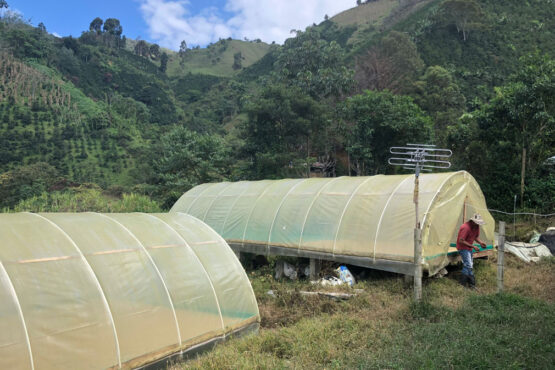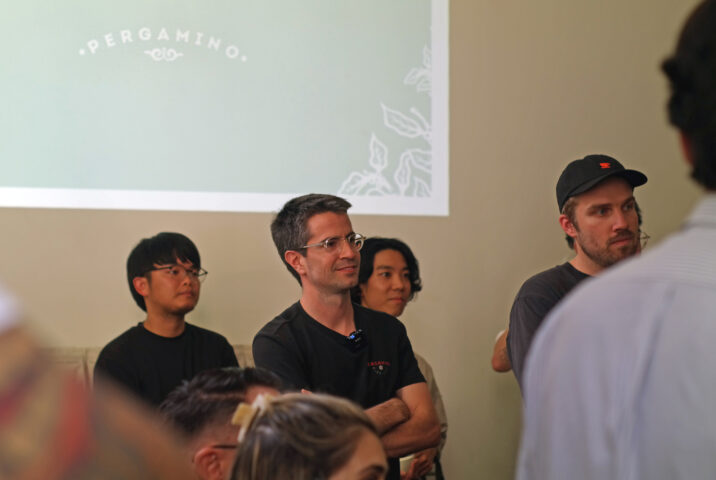Small Producers of La Plata
Rich and creamy with orange, praline and black tea. Rounded and balanced with good intensity.
This lot comes from a group of 10 members of our supply partner Pergamino’s Allied Producer Program who produce coffee in the municipality of La Plata. Located in the state of Huila, Colombia the region is found at a staggering elevation of 1,900-2,100m above sea level. The municipality covers several mountainside towns that border Inzá, in the state of Cauca, and forms part of the Macizo Colombiano (‘Great Colombian Massif’). Much like the soil found in these well-known coffee regions, the volcanic terrain of La Plata is perfect for coffee growing. Farmers here also benefit from year-round cool temperatures, access to abundant clean water, and almost exclusively produce coffee from older Caturra trees in plots of land under three hectares in size.
The producers who contributed to this offering were assisted on the ground by the influential Pillimué family, who work hand in hand with Pergamino as their local logistical operators in La Plata. While the Pillimués are based in the state of Cauca, their hometown of San Antonio sits at the border with the state of Huila — a mere 30km away from La Plata. Having farmed coffee here across three generations, the family has a longstanding presence in the area. Pergamino has partnered with them to set up a collection point in Huila, with the parchment collected being delivered to their facilities in San Antonio, where the family also keep the town’s general store and have built an adjacent warehouse and QC lab.
During the harvest, local farmers deliver small lots (around 100-150kg) of dried parchment to the Pillimué family’s warehouse and lab every two to three weeks. Upon delivery, a sample of the dried parchment is milled and assessed for physical attributes, including uniformity of size, presence of defects, moisture content and seed to hull ratio. If the coffee passes the physical assessment, it is accepted and the farmer receives their first payment for the coffee, calculated by the weight delivered and a base rate that includes a premium on top of the current local market rate.
The coffee is then sample milled, roasted and assessed for quality by local cuppers trained by Pergamino and sent weekly to Pergamino’s QC lab in Medellín for further assessment by their expert team. There, each lot is carefully evaluated and, depending on the cup score and profile, sorted into different grades of quality and combined into larger volumes or kept separate as a single estate lot. Feedback on each lot is relayed back to the producer and after it has sold, a second payment is made to them according to the premium the coffee attracted.
The team at Pergamino cups through hundreds of small lots at their QC lab in Medellín, to select the coffees that are blended together into this special regional lot. The coffees included were chosen for their outstanding cup profile and distinct regional characteristics. The team at Pergamino tell us the region is difficult to reach, as the hills are sharp and the highway that leads to the centre of town becomes practically impossible to traverse during winter. Their efforts pay off on the cupping table though, with lots from this corner of Huila consistently showing a unique vibrancy and clarity.
La Plata has a long history of coffee-growing and agriculture. Along with coffee, the region is known for growing rice, plantain and cacao and for its rich biodiversity. The region is the traditional home of the Yalcón and Nasa (or Páez) people. While few Yalcón communities survive today, the Nasa remain one of Colombia’s largest indigenous groups. During the Spanish invasion of Colombia, many of the Nasa were able to avoid bloodshed by escaping to the rugged hills and high plateaus of the Andes Mountains, where the Spaniards were unable to capture them. Today, the Nasa economy relies on agriculture, and society is organised into tight knit farming communities who distribute duties equitably under the guidance of cabildos, or locally elected councils. Like many indigenous groups across Latin America, the Nasa have spent decades lobbying for the return of their land rights, finding success in recent years. Their struggle has led to legal recognition of the fundamental rights of indigenous peoples, including recognition of the autonomy of their communal indigenous lands in the 1991 Colombian Constitution.
ABOUT HUILA
The department of Huila is located in the southwest of Colombia. It is framed by the Central and Eastern ranges of the Andes, with most of it sitting in the Magdalena Valley. This region is renowned for the quality of its coffee, and in 2013 it received the Denomination of Origin status. Coffee production in Huila belongs to an ecosystem of subtropical, very humid mountain forest. The year-round distribution of rainfall, rich soil and temperature allow exceptional coffee to be cultivated at elevations of up to 1,900 meters above sea level almost throughout the whole year. The state is also the home of Colombia’s largest volcano, Nevado del Huila, which is also visible from locations in Cauca and Tolima.
Huila is one of the largest coffee-producing regions in the country, however the size of coffee farms is overwhelmingly small-scale, with most farmers owning on average just 1.5 hectares of land. Alongside coffee they also grow rice, raise cattle, and farm fish. Our export partners for this coffee, Pergamino, have worked hard commercialise specialty-grade coffee throughout Huila, and have uncovered some stunning coffees and very dedicated producers in the process. They work closely with the producers to give them feedback on their coffees (provided by Pergamino’s expert team of cuppers) and provide top up payments when the coffee is sold at a higher premium.
Head here to learn more about the work of Pergamino.
HOW THIS COFFEE WAS PROCESSED
This coffee was processed using the washed method at each farm’s ‘micro-beneficio’ (mill). After being pulped using a small manual or electric pulper, coffee is placed into a fermentation tank, where it can spend anywhere between 48 and 72 hours. Because of the cooler climate in San Francisco, contributing producers tend to ferment their coffees for longer than usual, and some will often blend two days’ worth of pickings over the fermentation period. Coffee is then washed using cold, clean water.
Once rinsed, the wet parchment was carefully dried (over 10–18 days) on a raised bed with plastic over the top which protects the coffee from the rain and prevent condensation dripping back onto the drying beans. This bed has adjustable walls to help with air flow, and temperature control to ensure the coffee can dry slowly and evenly.
Once dry, the coffee was delivered to Pergamino’s warehouse, where it was cupped and graded, and then rested in parchment until it was ready for export.
